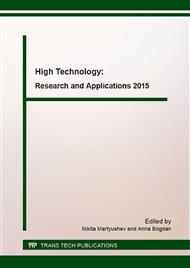p.925
p.930
p.934
p.939
p.943
p.948
p.952
p.957
p.962
Using Parallel Computing in Queueing Network Simulation
Abstract:
The paper is devoted to the simulation of queueing networks on high performance computer clusters. The objective is to develop a mathematical model of queueing network and simulation approach to the modelling of the general network functionality, as well as to provide a software implementation on a high-performance computer cluster. The simulation is based on a discrete-event approach, object oriented programming, and MPI technology. The model of the queueing networks simulation system was developed as an application that allows a user to simulate networks of rather free configuration. The experiments on a high performance computer cluster emphasize the high efficiency of parallel computing.
Info:
Periodical:
Pages:
943-947
Citation:
Online since:
February 2016
Keywords:
Price:
Сopyright:
© 2016 Trans Tech Publications Ltd. All Rights Reserved
Share:
Citation:


